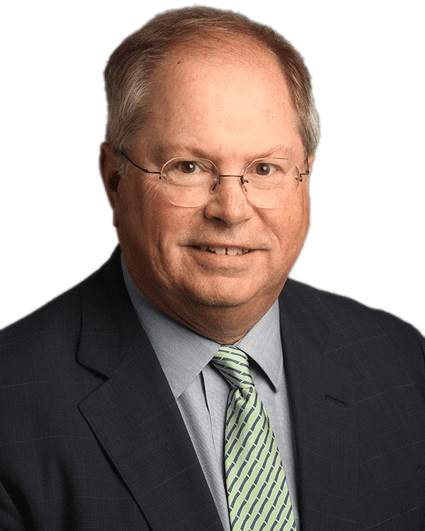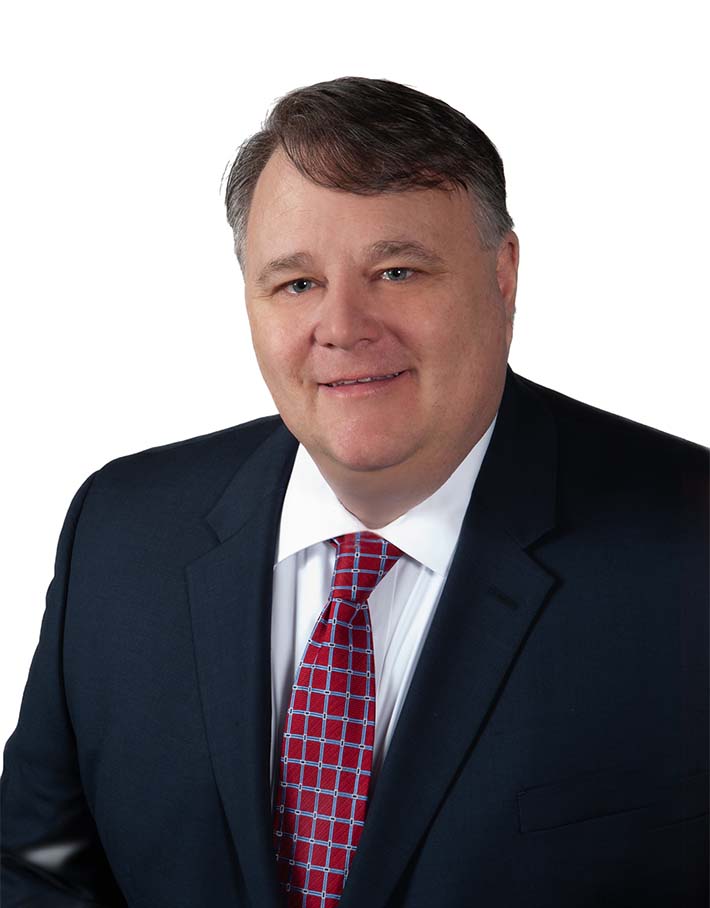T+1 Brings Operational Challenges
By Frank Childress, Jeff Gearhart, Jay Donlin and Pete McAteer
Subscribe to our original industry insights
Although T+1 is not scheduled to be implemented until 2024, there are a lot of things firms need to take into consideration well beforehand. In this Oyster Stew podcast, experts Frank Childress, Jay Donlin, Jeff Gearhart and Pete McAteer, who all have extensive experience in trading and markets and conversions, share their insights on what firms should be thinking about at this stage and what steps can be taken to make sure they’re ready.
Transcript
Transcript provided by Temi transcript services
Oyster: Although T+1 isn’t scheduled to be implemented until 2024, there are a lot of things firms need to take into consideration well beforehand. In this Oyster Stew podcast, our experts, Frank Childress, Jay Donlin, Jeff Gearhart, and Pete McAteer, who all have extensive experience in trading and markets and conversions share their insights on what firms should be thinking about at this stage and what steps can be taken to make sure they’re ready. Let’s get started.
Frank Childress: Well, thanks Libby. That’s a great intro. Today we’re discussing the SEC’s recent announcement and proposal to move from a T+2 settlement to a T+1 settlement. This has been a long time coming and been discussed for quite a while. I think all of us were in the industry back in the mid-nineties when we moved from a T+5 settlement to a T+3. The SEC moved from a T+3 cycle to T+2 in September of 2017, and they’ve been discussing a T+1 cycle for a number of years. And it seems like we have our ducks in a row to embark on that. The expected date for this is March of 2024. And so, Jay, can you address some of the operational challenges as we compress the settlement cycle?
Jay Donlin: So, yeah, Frank, operational impacts are going to be significant depending on your business model. We’ve done a lot of trading or a lot of settlement activities for options on T+1 for years now. And so moving to other security type in a T+1 environment, there are going to be impacts. The question is how much of the impact is going to affect your firm? Do you have a lot of operational processes around affirmations, confirmations, trade settlements, that that timeline is going to get suppressed or compressed in new world of T+1. You need to look at all your business lines and see how that potentially would impact your firm and then your interactions with your clearing firm or custody firm from that perspective as well.
Frank Childress: This rule is going to have a lot of dependencies on our industry partners. So Jeff, can you tell us about what we know at this point about the testing schedule going forward?
Jeff Gearhart: The testing schedule is murky at best. It’s going to require all participants from custodians to depositories, to broker dealers. It even going to be a requirement for behavioral changes on the behalf of the buy side, the actual investors. Testing right now is planned to begin in the beginning of 2023. And we’ll continue throughout the year. I think the testing schedule hasn’t been completely mapped out at this point to my knowledge. But I think there’s a lot of changes to come. The behavioral changes I’m referencing on the buy side, that people need to be aware of, are something as simple as allocations in the settlement cycle that’s going to be there. Trades are going to be, have to be affirmed by 9:30 on trade date instead of 11:30 AM the next morning. And you’re losing the whole day to clean up any trade issues, complete affirmations, do any of those types of issues. So the buy side’s going to have to get their allocations and other information in much sooner than they used to. A lot of folks can do that today. A lot of folks still require manual updates. I think stay tuned on the testing, there’s a lot more to come as we move closer to the end of the year.
Frank Childress: Thanks, Jeff. Super helpful with respect to the testing schedule and certainly more to follow on that. And I think we’re still in the comment period for the SEC at this point. We certainly expect to see a lot more rollout from the SEC on this schedule going forward.
Jeff Gearhart: Well, I think we should talk about some of the key areas that would be impactful. Some areas to focus on include just the basic trade affirmation and matching process. I think I mentioned that as part of the testing schedule, you have to continue to standardize and automate the manual processes that exist today, and it won’t be sufficient in the new world. But you need to look broader and determine if global settlements and foreign exchange transactions are going to be a part of your business because that’ll have a big impact regarding timing. FX Spot still is two days to settle post execution. How how’s that going to impact your business? You’ll have to evaluate the security master files and anything impacting corporate actions. So you’re going to have to make sure you’re tight on the deadlines and getting the security master file updated to avoid issues is we move closer to T+1. There’s a lot of efficiencies and gains to be had, but the window to correct and make sure you’re lined up for trade settlement closes. And it could expose us to more fails and more operational risks, even if we’re reducing market and liquidity risks with the overall T+1 settlement.
But one question I have from the group is anybody’s perspective on the different platforms out there, batch processing. How is that going to evolve? What are the changes that are going to have to be made and is it significant? How’s the industry going to deal with this?
Jay Donlin: Jeff, on the systems providers that basically run the backbone of the industry, there’s definitely going to need to be some changes and some streamlining of activities related to batch processing in order to compress this cycle. They’re used to having an extra day, so to speak for items to clean up and with that loss of that extra day, affirmations and that sort of thing are going to need to speed up in order for settlement to occur properly. So the service bureau providers that run a lot of these systems, firms that had taken over and built their own systems are going to have to address those compressed timelines in their various systems and workflows, for their correspondent firms, as well as their traditional business brokerage firms and RA custody.
Frank Childress: Thanks, Jay, appreciate those comments. I think that’s a really good point. I think it’s clear as we move through the process, and there’ll be a robust testing schedule that goes along with this, that we have significant dependencies on those other firms that you just mentioned. So testing would be critical as we go forward and, I’m sure our regulators will be keeping a close eye on how well the testing goes. But we we’ve got a couple of years to get this implemented. And given that we’ve been down this road before with shortening the settlement cycle, I expect that firms will be able to adapt well to these shorter settlement cycle changes. So need needless to say, there’s going to be a lot of regulatory impacts. Jeff, can you address some of the regulatory change challenges that we’ll be facing?
Jeff Gearhart: Sure. Keep in mind from a regulatory standpoint that there’s a lot of changes just to the rules. Anything that references T+2 is now going to have to be adopted to a T+1 requirement. It’s going to have a lot of impact in terms of how firms comply. I think we all know what the steps are, but in anything that’s being done manually today, are you really going to be able to get that done in the new environment for T+1 settlement? For example, just the basic affirmation process with the 11:30 AM deadline, the next day is going to probably move to 9:30 PM the same day, or simply delivery of confirmations, offering documents, things of that nature that have to be delivered before settlement date. There’s a lot to address. You’re going to have to work with your vendors, your clearing firm, and your own teams to address processes and procedures to make sure you comply.
Frank Childress: So now that the SEC has proposed this T+1 settlement cycle, we all know that the trading day actually ends at four o’clock. So needless to say, we have a lot less than 24 hours’ time to manage a lot of activity that takes place between the end of the trade date and settlement date. Can you address some of those challenges and some of the things that we need to be thinking about
Pete McAteer: More than likely, at the end of the trading day, not a whole lot’s getting done by 5, 6, 7 o’clock anyway. They’re coming in the next morning and doing that, any manual work, maybe starting at seven or eight, because they have to get certain work done by 1130. So that work was probably going to have to be done up until 9:30 PM. So it is going to shift. It’s going to be a change in the workplace dynamics if you will, if manual processes are to stay in place or if that’s global nature of our business today, some of that’s being done in a different hemisphere. So the work’s being done overnight. That’s also something to be considered and taken into account. Then you’ve got the automation opportunities, that every vendor out there is, you’re going to have to challenge your vendors to help identify where those opportunities are and help execute on those.
Jeff Gearhart: I do think we should talk a little bit about T+0. T+1 is getting all the attention right now, but it’s clear that the industry wants to move to T+0. And I think it’s important for firms now to evaluate their platform readiness to for T+1, but they need to think of the future. That this is going to happen as technology improves. So you really need to lay out a plan for now. But you need to lay out a plan really for 3, 4, 5 years down the road. It’s very clear the tone, the desire to get the T+0 there was mentioned in all the releases. It gets too big of a lift right now, but they really want the evolution of manual and batch processing procedures to evolve to an automated format, to standardization and to a better infrastructure. So you need to keep that in mind as we’re moving forward,
Pete McAteer: Whether it’s real time or distributed leisure, right. Or as you’re doing real time, instantaneous settlement, great point, Jeff.
Jay Donlin: And one other impact that we haven’t discussed is margin. That’s going to shorten the margin requirement schedule. That’s another thing the regulators have to address as well.
Pete McAteer: And net capital requirements will be impacted as well. Shorter settlement cycles.
Jeff Gearhart: A lot to be gained, but a lot of risk in the interim.
Pete McAteer: If T+1 doesn’t get your attention, T+0 certainly will.
Frank Childress: Pete, why don’t you give us an overview of what we might expect and how we might approach this industry change?
Pete McAteer: We’re happy to. Thanks, Frank. Generally the way Oyster approaches most every one of our engagements is to get to know our client as best possible with something like this. We would take a deeper dive, a more customized, tailored approach to better understand your trading volumes and your trading desk operations, and the operations that support the trading desk. So what we would do is; we would request information. We would identify key stakeholders. We would schedule some specific targeted interviews. We would review the information that we receive. We would compare our notes and ensure that we understand the business and the current state of operations what the current challenges may be across your organization. Understanding your systems, your platform, your technology, the interfaces, and how the data works together, to ensure that we have a good, comprehensive understanding of your technology stack.
And then once we understand that we’ll document that. And basically, I always say we hold a mirror up in front of your firm to reflect back what we’ve heard and what we’ve learned to make sure that we have the best possible factual understanding of your firm. And once we have that established, then we can have the groundwork and the foundation by which we can start to talk about options, challenges, potential risks, and alternatives to be considered so that we can isolate key areas that need attention and focus our consulting team on the right things.
Frank Childress: That’s a great summary, Pete, and also a good catalyst, as you talked about some of the challenges that we might face.
Oyster: Thanks everyone for listening. If you would like to learn more about T+1 and how Oyster can help your firm contact us@oysterllc.com. If you like what you heard today, please give us a review on whatever platform you listen to so it’s easier for listeners to find us.






